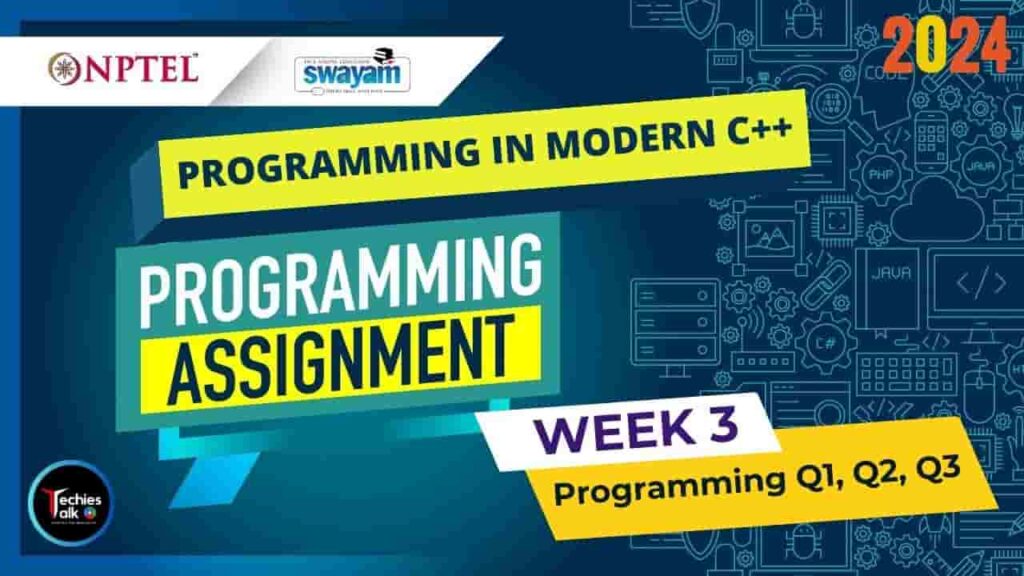
There has been a continual debate on which programming language/s to learn, to use. As the latest TIOBE Programming Community Index for August 2021 indicates – C (13%), Python (12%), C++ (7%), Java (10%), and C#(5%) together control nearly half the programming activities worldwide. Further, C Programming Language Family (C, C++, C#, Objective C etc.) dominate more than 25% of activities. Hence, learning C++ is important as one learns about the entire family, about Object-Oriented Programming and gets a solid foundation to also migrate to Java and Python as needed. C++ is the mother of most general purpose of languages. It is multi-paradigm encompassing procedural, object-oriented, generic, and even functional programming. C++ has primarily been the systems language till C++03 which punches efficiency of the code with the efficacy of OOP. Then, why should I learn it if my primary focus is on applications? This is where the recent updates of C++, namely, C++11 and several later offer excellent depths and flexibility for C++ that no language can match. These extensions attempt to alleviate some of the long-standing shortcomings for C++ including porous resource management, error-prone pointer handling, expression semantics, and better readability. The present course builds up on the knowledge of C programming and basic data structure (array, list, stack, queue etc.) to create a strong familiarity with C++98 / C++03. Besides the constructs, syntax and semantics of C++ (over C), we also focus on various idioms of C++ and attempt to go to depth with every C++ feature justifying and illustrating them with several examples and assignment problems. On the way, we illustrate various OOP concepts. The course also covers important advances in C++11 and later released features..
Programming In Modern C++ Week3 Programming Assignment 2024
INTENDED AUDIENCE : Any interested audience
PREREQUISITES : 10th standard/high school
INDUSTRY SUPPORT : Programming in C++ is so fundamental that all companies dealing with systems as well as application development (including web, IoT, embedded systems) have a need for the same. These include – Microsoft, Samsung, Xerox, Yahoo, Oracle, Google, IBM, TCS, Infosys, Amazon, Flipkart, etc. This course would help industry developers to be up-to-date with the advances in C++ so that they can remain at the state-of-the-art.
Course Layout
Programming In Modern C++ 2024
Programming Assignment Q1 :
Consider the program below.
• Fill in the blank at LINE-1 to complete the parameterized constructor.
• Fill in the blank at LINE-2 to complete the copy constructor.
• Fill in the blank at LINE-3 to complete the appropriate function header.
The program must satisfy the given test cases.
#include<iostream>
#include<cmath>
using namespace std;
class Complex_num{
const int x,y;
public:
Complex_num(int _x=0, int _y=0) : x(_x), y(_y) {} //LINE-1
Complex_num(const Complex_num& c) : x(c.x), y(c.y) {} //LINE-2
Complex_num addition(const Complex_num& c) const {
return Complex_num(x+c.x, y+c.y); //LINE-3
}
void print(){ cout << "(" << x << ", " << y << ")" << endl; }
};
int main(){
int x1,x2,y1,y2;
cin >> x1 >> y1 >> x2 >> y2;
Complex_num c1(x1,y1), c2(x2,y2);
Complex_num c3 = c1.addition(c2);
c3.print();
return 0;
}
Programming In Modern C++ 2024
Programming Assignment Q2 :
Consider the following program.
• Fill in the blank at LINE-1 with the appropriate constructor statement.
• Fill in the blank at LINE-2 with the appropriate destructor statement so that the dynamic memory allocated in the constructor can be properly deleted.
The program must satisfy the sample input and output.
#include<iostream>
using namespace std;
class CharArray{
char *arr;
int size;
public:
CharArray(int n) : size(n), arr(new char[n]){} //LINE-1
~CharArray(){ delete[]arr; } //LINE-2
void EnterEle(){
for(int i=0;i<size;i++)
cin >> arr[i];
}
void FindMax(){
char max = -1;
for(int i=0;i<size;i++){
if(max < arr[i])
max = arr[i];
}
cout << "Max: " << max;
}
};
int main(){
int n;
cin >> n;
CharArray a(n);
a.EnterEle();
a.FindMax();
return 0;
}
Programming In Modern C++ 2024
Programming Assignment Q3 :
Consider the following program.
• Fill in the blanks at LINE-1 to declare the data member z.
• Fill in the blanks at LINE-2 to complete the change() function header.
• Fill in the blanks at LINE-3 to complete the print() function header.
The program must satisfy the sample input and output.
#include<iostream>
using namespace std;
class Constant{
int x, y;
mutable int z; //LINE-1
public:
Constant(int _x, int _y) : x(_x), y(_y){}
void change() const { z = x * y; }; //LINE-2
void print() const { //LINE-3
cout << "x = " << x << ", y = " << y << ", z = " << z;
}
};
int main(){
int i, j;
cin >> i >> j;
const Constant m(i, j);
m.change();
m.print();
return 0;
}